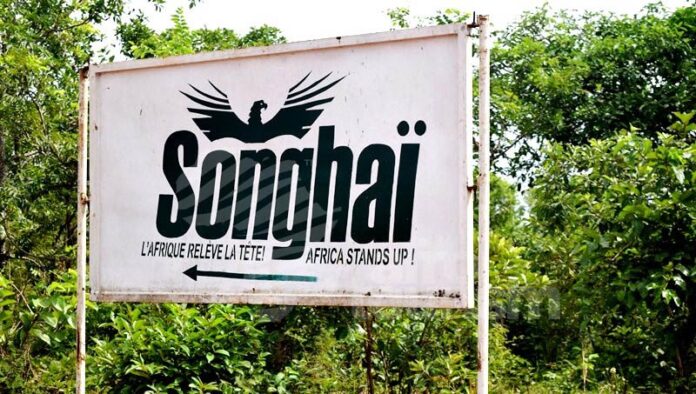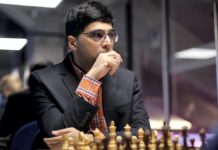I walked down the aisle
But could not get myself
I stopped at the sea
There, I could see no one
There at my doorstep laid the answer to all my worries
The marvel of nature untold, “SONGHAI”
This is an unraveled mystery of mankind so to say, a firm with hidden riches like ‘Vibranium of Wakanda’ and a rare flower to be cherished. A secret that my grandfathers would never tell but now I have seen for myself a wonderland, an Utopia where everything is perfect with primitive technology.
Songhai Farm is an institute under the umbrella of Agriculture. It is a farm though but is a great institution for learning. Many think that a farm is of primitive knowledge but this era of mankind, the 21st century has defined a farmland as a haven of food and has compared its dealings to be greater than that of any institute. Here does Songhai Farm lie at its core and must be revealed to the world no matter the circumstance.
Songhai Farm was established by a Nigerian, Rev. Fr. Amuja Godfrey, a Catholic Priest from Edo State situated in the Giant of Africa, Nigeria. It is the biggest farm in Africa located in diverse countries like Benin Republic, Sudan, Cameroon, Chad, Niger, Mali, Mauritania, Nigeria and so much more with a minimum of 107 hectares of land in each. The establishment of this firm is traced to the voracious environmental degradation, rural-urban migration and a lot of atrocities that occurred after the First Civil War that took place in Nigeria which affected the great continent of Africa.
Luckily, Songhai Farm is just three hours drive from my home in Plateau State, Nigeria. This firm-Songhai is so unique in the sense that it adopts an integrated system with the slogan, “NO WASTE”. Everything here is made up of organic substances and every waste product derived is converted into an eloquent necessity of man. The farm is classified into three major sections with subsidiary zones namely: The Primary Production Zone (dealing with human labour) and The Secondary Zone (construction with mechanical tools).
The Primary Production Zone deals with Crop Production, Fishery and Animal Production. Just as science would say, crop production is a branch of agriculture that entails the use of specific farming and cropping system to ensure efficient and effective productive yield of crop plants. Not just this, the section of crop production has been successfully merged with the rearing of domestic animals such as goats, cattle and sheep (of diverse species) though on another plot of land within the same area. The main purpose of this section is to provide fodders needed to feed the animals as well as provide foodstuffs for sale at the country markets. How considerate! The aspect of fishery is not left out as fishery is defined as the care and management of fishes and other aquatic animals for the use of man.
There is this profound interaction of both sections of Songhai Farm in the sense that the waste products of one serves as the source of survival for the other. The dung of the animals (herbivores and fishes alike) is channeled into the crop production centre so as to supply the required nutrients needed for the crops to survive. Grass mulching is used to retain humidity and deter the growth of weeds which saves man-power. The fishing system applied is different from any other that I have seen. The fish ponds are dug out hollows filled with water as Plateau is a water logged area. The use of chemicals on this firm is highly prohibited so water hyacinths and lilies serve as a green purification system in this pond. The technology behind it is what I can’t tell. Can anyone believe that the intestines of domestic animals are decomposed into maggots which are fed to the fishes as a source of protein? One should note that this is only the tip of the iceberg as the wonders of The Secondary Zone are “WOW”.
The Secondary Zone of Songhai is divided into: The Industrial Section and Biogas Section. The Industrial Section comprises of a food processing centre where bread, meat and fruit drinks are processed. It is so interesting to know that the machineries are made of local ovens which are constructed from clay to process fruits into drinks, shells of nuts into local granites used to construct internal pathways in the farm, batter into delicious pastries and meat into assorted and packaged sausages etc. it is so shocking to learn that the Biogas Section is the centre of electricity generation for Songhai. Faeces from water closets in this firm are channeled into section. In details, the production of electricity goes thus: dung of animals from The Primary Zone is fed into a mechanical digester where fermentation takes place. Thereafter, there is a leakage of NPK (Nitrogen, Phosphorus and Potassium) which is rich ammonia. Ammonia is then diluted with water and fed into a water tank since it contains methane gas which is highly needed for the production of electricity. Quicklime is then used to neutralize the carbondioxide emitted. The faeces are then filtered and electricity is produced.
To be candid, Songhai Farm has imparted a lot of goodness into this state, our country Nigeria as well as many other nations in Africa. The production of cooking gas with the use of potatoes, the production of soaps from cucumbers, the transformation of palm-fronds into mushrooms and other untold facts are replicas of the Songhai’s Slogan, “NO WASTE”. Recently, Songhai Farm has been opened as a tourist centre in Nigeria. I am pretty sure that after reading this write-up, you wouldn’t hesitate to stop by at Plateau State, Nigeria to take a tour round this wonderland. This is the agricultural future of Africa!!
By OKPATA AMARACHI SYLVIA,LAGOS, NIGERIA
















